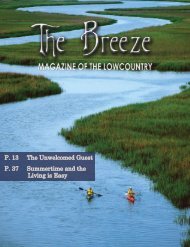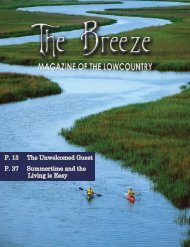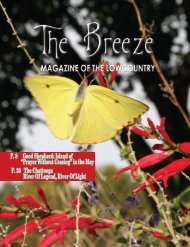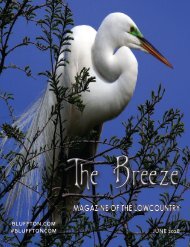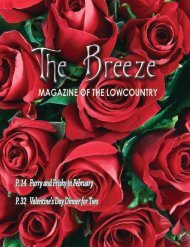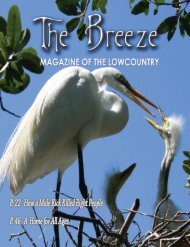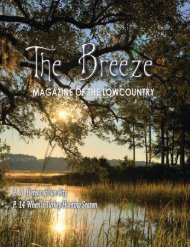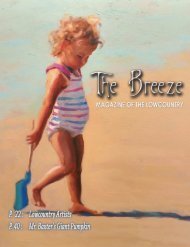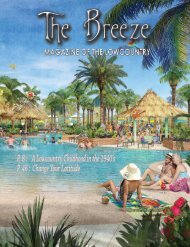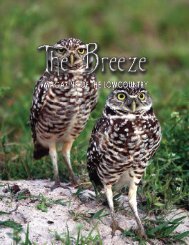Create successful ePaper yourself
Turn your PDF publications into a flip-book with our unique Google optimized e-Paper software.
Horned Grebe<br />
This small water bird is a great<br />
candidate for the “before and<br />
after” photo. In breeding plumage,<br />
they have a distinct yellow tuft<br />
behind each eye, black cheeks, and<br />
contrasting reddish neck feathers.<br />
When they are here in winter,<br />
they are lacking the yellow tufted<br />
“horns” and are greyish overall with<br />
a white cheek. However, their eye is<br />
consistently red, hence the nickname<br />
devil diver or water witch. <strong>The</strong>y have<br />
a short bill with a white tip. <strong>The</strong>y<br />
dive for small fish and eat their own<br />
feathers, possibly to filter fish bones<br />
for further digestion. <strong>The</strong>y typically<br />
nest on floating vegetation. Young<br />
birds are fed feathers to start the<br />
“filter mat” early and can be seen<br />
riding on their mother’s back. <strong>The</strong>y<br />
are great divers, very awkward on<br />
land, and NOT a duck!<br />
Photographed by Eric Horan<br />
Common Loon<br />
This winter visitor can be seen and occasionally heard on the May River. To be honest, I<br />
recognized the sound because of the movie On Golden Pond where Katherine Hepburn<br />
says “loon” 147 times…approximately. <strong>The</strong>y breed in summer on fresh water lakes in the<br />
Northern US and Canada. <strong>The</strong>y migrate to our area to spend time on water that does not<br />
freeze. <strong>The</strong>ir “down South” plumage is grey overall with a white throat. <strong>The</strong>ir dagger-like<br />
beak even fades in color. On Golden Pond, they have a striking black and white pattern on<br />
their back and a black head. <strong>The</strong>y are great swimmers and divers, and rarely walk. <strong>The</strong>y<br />
hunt for small fish and are able to expertly handle slippery fish with projections on the roof<br />
of their mouth pointing back toward their throat. For decreased buoyancy, their bones are<br />
solid, which probably contributes to the necessary 30 yard runway to get off the water. In<br />
flight, their feet hang out the back unlike ducks in flight. You got it! NOT a duck.<br />
15




